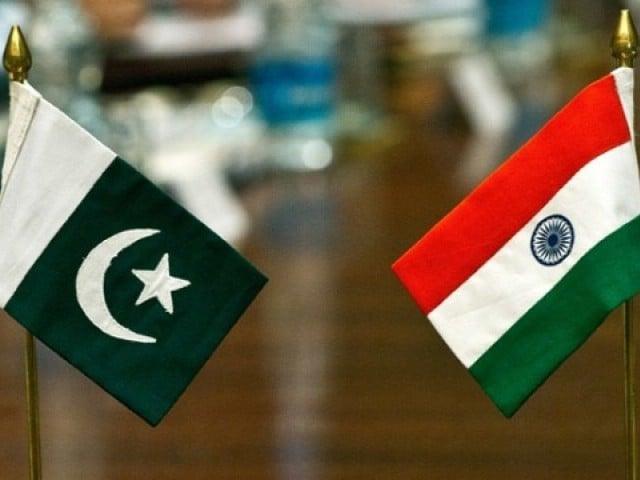Islamabad:
Pakistan has requested the authorization of the International Monetary Fund (IMF) to impose a special tax of 1% on each taxable product produced in the country, with the exception of electrical energy and drugs, in order to finance two mega water storage dams as a solution to treat the Indian aggression of water.
The decision to impose a new Cess was taken after the majority of provincial governments showed a reluctance to finance the early completion of the Diammer-Bhasha dam and the Mohmand dam, according to the sources of the Ministry of Resources in Water and the Ministry of Finance.
However, the government also encountered the IMF opposition, which urged the federal government to try to find a space in the development program of the federal public sector approved by 1 Billion de Rupes, the sources revealed.
The Diamer -Bhasha dam worth 480 billion rupees and the Mohmand dam – originally estimated at RS310 billion – had been approved in 2018, but a minimum of 540 billion rupees was necessary for their completion.
India has threatened to cut the water supply after having held the Indus Water Treaty (IWT) in violation of the provisions of the Treaty and in the violation of international law. Islamabad clearly told India that such an act would be considered an act of war.
The sources said that as an alternative strategy, Pakistan has decided to quickly follow the construction of the two dams. However, due to its political priorities and urgent requests by coalition partners, the government reduced the development budget of the water sector by 28% to 13 billion rupees for the next fiscal year. Now he wants to compensate for this by introducing a new tax.
The sources indicated that the government had decided to receive a stop of 1% on the gross value of all local taxable supplies to collect additional funds, subject to approval by the IMF and by the Parliament. They said that all the goods produced in Pakistan and subject to taxes are offered to be billed at a new Cess rate of 1%.
The goods which are currently exempt from the sales tax under the sixth appendix or are invoiced at a zero rate under the fifth appendix of the sales tax law would be sheltered from the CESS. Likewise, electrical energy and pharmaceutical products are offered to be exempt from the new Cess.
Cess is different from a normal tax and can only be removed for a specific purpose, such as the cess in the development of the gas infrastructure (GIDC) which had been imposed to finance the Iran-Pakistani gas pipeline. Indeed, each property produced in Pakistan and consumed by all households would be subject to 1% of new special taxes, according to sources.
The spokesman for the Ministry of Finance Qumar Abbasi and the Ministry of the Water Resources Secretary Syed Ali Murtaza did not respond to the request for comments. They were asked to confirm the development as well as the position of the IMF.
A senior official of the Ministry of Finance said that the proposal was being studied, but that discussions with the IMF were still underway. He said that the CES would not be imposed by the 2025 finance law, and rather a new separate bill will be presented in Parliament, subject to the authorization of the IMF.
In the case of GIDC, the Supreme Court has decided that the Cess can only be taken for a specific purpose and that it requires separate legislation. This creates the hands of the government of the introduction of the Cess through the finance law, which is currently under discussion in Parliament.
The GIDC case is also an example of how the government is indifferent. Textile and fertilizer companies have not yet deposited more than 400 billion rupees in the kitty despite consumer collectors. Finance and oil ministries are unable to do an effective strategy.
One of the options is that instead of taking a new Cess of 1%, the government should modify the GIDC law and divert the money already collected towards the construction of dams.
On the intervention of the Minister of Petroleum, Ali Perviz, the government again formed a committee under the presidency of the Minister of Finance Muhammad Aurangzeb to recover the GIDC. But this committee also evolves at a rate of snail.
The sources said that the IMF’s point of view was that the government should finance the PSDP dam projects instead of imposing more burden on people.
However, the Ministry of Water Resources informed the government that it would take 15 years to finish the Mohmand dam and more than 20 years to finish work on the Diamer-Bhasha dam at the current rate of budget allowances.
The PSDP is already overloaded and there is no space to finance these projects beyond the allowances made in the new budget, said Ahsan Iqbal, the Federal Minister of Planning and Development. He said that on RS1 billion rupes allowances, in fact, 640 billion rupees were available to finance the PSDP.
IQBAL said the remaining RS360 billion had been allocated for expenses on road N-25 Karachi-Conqueta, provincial regimes and special zones allowances.
The sources said that after the meeting of the National Economic Council (NEC) earlier this month, Prime Minister Shehbaz Sharif also chaired a special meeting with the provinces to convince them to finance these two dams to deal with the Indian assault.
At a follow-up meeting with Dar-Prime Minister Ishaq Dar, the provinces, with the exception of Khyber-Pakhtunkhwa, showed a reluctance to finance federal projects, the sources said.
The cost of the Diamer-Bhasha dam had been estimated at RS480 billion seven years ago and it still needs 365 billion rupees to finish work against a price that should increase more. For the next financial year, only 25 billion rupees have been allocated to the project, which is even less than this exercise.
Likewise, the Mohmand dam was approved at the cost of RS310 billion seven years ago and still requires a minimum of RS173 billion more at the old price. Only RS35.7 billion was allocated during the new fiscal year.
Earlier this week, Ahsan Iqbal said that the government had advanced the completion of the two two -year projects and that these dams will be completed by 2030. He said that Pakistan will have 7 million feet of additional water storage capacity.
The two tanks of Pakistan Tarbela and Mangla face storage problems due to sedimentation and other technical problems.
The Sindh government has given a deficit budget for the next financial year and has also shown a zero balance sheet for outgoing exercise. This surprised a lot because the provincial government had a cash surplus of 395 billion rupees until March of this year, according to the summary of budget operations of the Ministry of Finance.
For the next fiscal year, Sindh has shown a deficit budget of 38.5 billion rupees, which goes against the fundamental objective of the IMF to obtain 1.4 billion of cash surpluses from the four provinces.




